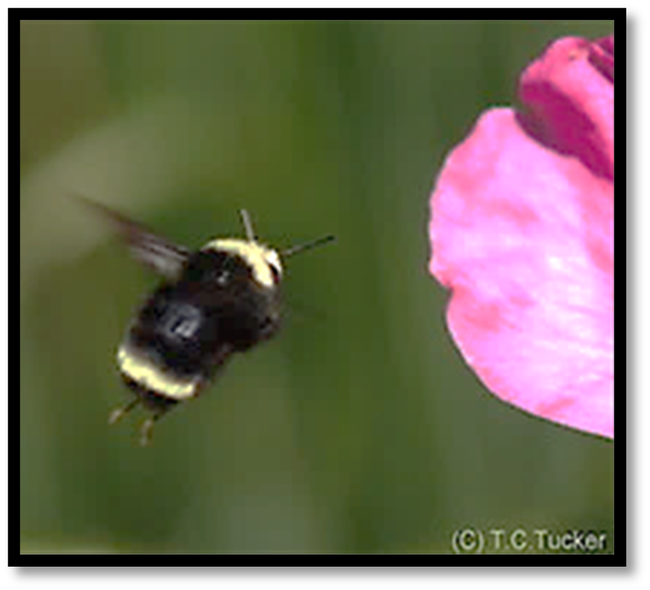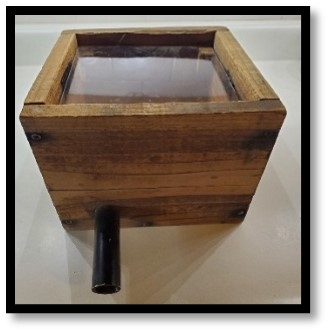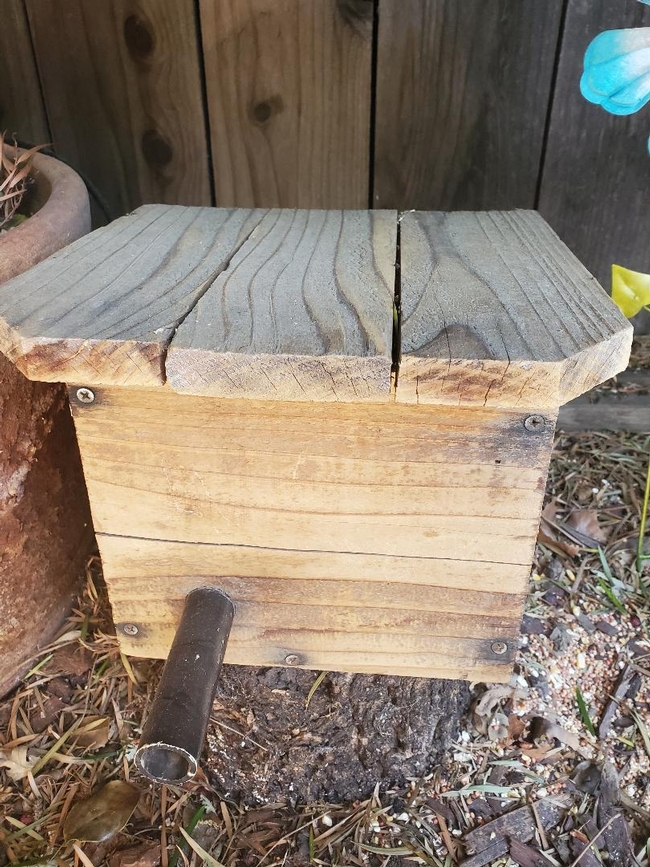It's Time to Put the Bumblebee Barns Out into the Garden!
I was doing some gardening the other day and saw a bumble bee buzzing around as if in a frenzy. I didn't think it was looking for nectar or pollen because it was buzzing near the ground in an area of our garden that does not have flowers.
My guess was that it was a bumblebee queen looking for a place to nest. So, in excitement, I pulled out a bumblebee nesting box that I was waiting for the right time to use and placed it in the area where she was hovering. This nesting box was built by UCCE Master Gardener-Solano, Tom Tucker, and was used as a display item for the many bee presentations that Tom has given in the area prior to the Covid-19 pandemic.
I did some research and confirmed that my guess was on the mark. According to the UC Davis Häagen-Dazs Honey Bee Haven, the bumblebee queen mates and overwinters by herself usually in a small ground nest. The bumblebee queen then emerges when the temperature is warm enough, usually over 55 degrees Fahrenheit. Once the queen emerges, she looks for a place to nest and lay eggs.
The nesting box I used is shown in the photos at the end of this article. It is weathertight and made from preservative-free lumber with inside dimensions of approximately 7” x 7” x 7”. A tube has been inserted through a hole for an entrance and exit point for the bees. The design is fun as it has a transparent plastic top with a wooden cover that can be pulled off to take a look at the bumblebees without disturbing them.
The box is filled with pieces of string or soft bedding material like nonsynthetic upholsterer's cotton. I placed it in partial shade on top of an old tree stump for a charming addition to the garden. This type of nesting box can also be buried with the tube reaching above ground for entry.
To encourage the bumblebees into the garden, I grow flowers that they are attracted to, such as poppies, sweet peas, bluebells, wild lilac, and plenty of different varieties of salvia.
Many bee nesting boxes are available online and in stores. If you would like to build your own bee nesting box, the Xerces Society for Invertebrate Conservation has an easy step-by-step fact sheet called ‘Nests for Native Bees' found at https://www.xerces.org/publications/fact-sheets/nests-for-native-bees. The fact sheet also has information on different types of nesting boxes for our many other native bees.
I am looking forward to seeing happy bumblebees taking up residency in my bumblebee nesting box and hopefully, I will have good photos to share on this blog topic.

Bumble Bee - Tom Tucker

Bumble bee barn built by Tom Tucker 2 - photo by Paula Pashby

Bumble bee barn built by Tom Tucker.

